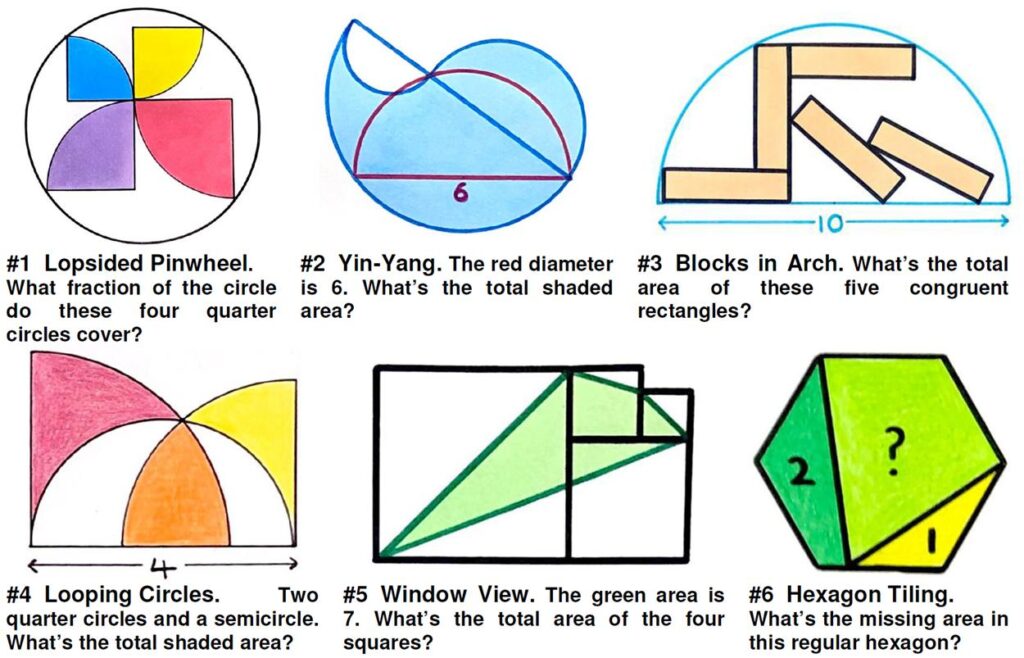 Here is yet another (belated) collection of beautiful geometric problems from Catriona Agg (née Shearer).
Here is yet another (belated) collection of beautiful geometric problems from Catriona Agg (née Shearer).
Tag Archives: plane geometry
Playing with Triangles
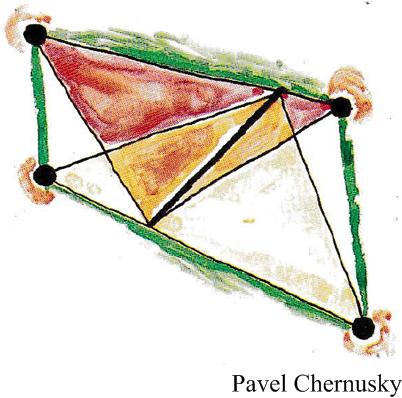 Here is another elegant Quantum math magazine Brainteaser from the imaginative V. Proizvolov.
Here is another elegant Quantum math magazine Brainteaser from the imaginative V. Proizvolov.
“Two isosceles right triangles are placed one on the other so that the vertices of each of their right angles lie on the hypotenuse of the other triangle (see the figure at left). Their other four vertices form a quadrilateral. Prove that its area is divided in half by the segment joining the right angles. (V. Proizvolov)”
Two Equilateral Triangles
 This is a most interesting problem proposed by Mirangu and retweeted by Catriona Agg:
This is a most interesting problem proposed by Mirangu and retweeted by Catriona Agg:
“Two equilateral triangles share a vertex. What is the proportion red : green?”
See the Two Equilateral Triangles for solutions.
Octagonal Area Problem
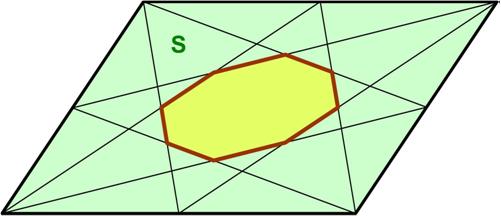 Here is another problem from the Polish Mathematical Olympiads published in 1960.
Here is another problem from the Polish Mathematical Olympiads published in 1960.
“95. In a parallelogram of given area S each vertex has been connected with the mid-points of the opposite two sides. In this manner the parallelogram has been cut into parts, one of them being an octagon. Find the area of that octagon.”
See the Octagonal Area Problem for solutions.
Circle Chord Problem
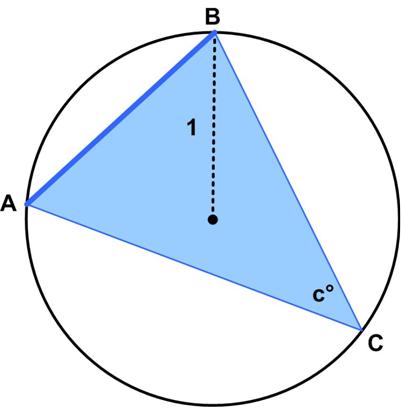 This is another nice puzzle from the Scottish Mathematical Council (SMC) Senior Mathematical Challenge of 2008.
This is another nice puzzle from the Scottish Mathematical Council (SMC) Senior Mathematical Challenge of 2008.
“The triangle ABC is inscribed in a circle of radius 1. Show that the length of the side AB is given by 2 sin c°, where c° is the size of the interior angle of the triangle at C.”
The diagram shows the case where C is on the same side of the chord AB as the center of the circle. There is a second case to consider where C is on the other side of the chord from the center.
See the Circle Chord Problem
Ubiquitous Radius Problem
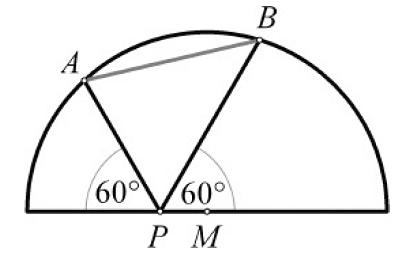 This is an interesting problem from Posamentier and Lehmann’s Mathematical Curiosities.
This is an interesting problem from Posamentier and Lehmann’s Mathematical Curiosities.
“In the figure we have a semicircle with the point P randomly placed on the diameter. Points A and B are situated on the circle such that they form angles of 60° with the diameter as shown in the figure. This problem asks us to show that the length of AB is equal to the radius of the semicircle.”
See the Ubiquitous Radius Problem
Tethered Triangle Puzzle
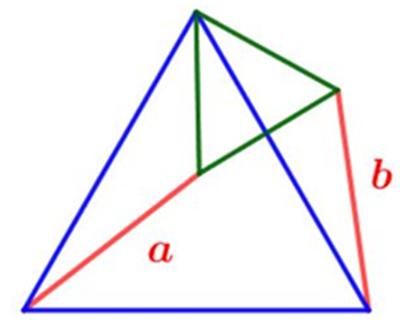 This is another problem from MEI’s MathsMonday.
This is another problem from MEI’s MathsMonday.
“Two equilateral triangles share a common vertex. Show that the lengths marked a and b are equal for any such arrangement.”
This seems quite amazing at first. One can picture the small triangle swinging back and forth with red bungee chords tethering its bottom vertices to the bottom vertices of the large triangle. It would seem remarkable that the lengths of the chords would remain equal to each other throughout.
See the Tethered Triangle Puzzle
Wandering Epicycle
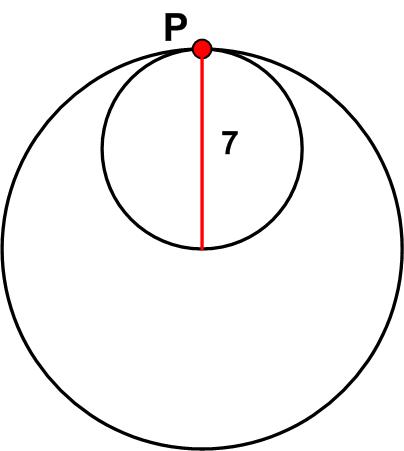 Here is an intriguing problem from the 2021 Math Calendar.
Here is an intriguing problem from the 2021 Math Calendar.
“If the smaller circle of diameter 7 rotates without slipping within the larger circle, what is the length of the path of P?”
The problem did not state clearly how far the smaller circle should rotate. Its answer implied it should complete just one full (360°) rotation within the larger circle.
Recall that all the answers are integer days of the month.
See the Wandering Epicycle for a solution.
(Update 1/3/2022) First, this problem is dealt with in more detail and more expansively on the Mathologer Youtube website by Burkard Polster in his 7 December 2018 post on the “Secrets of the Nothing Grinder” (Figure 1). A further, deeper discussion of epicycles is given in the Mathologer’s 6 July 2018 post on “Epicycles, complex Fourier and Homer Simpson’s orbit” (Figure 2). And finally, a panoply of related puzzles is given in the 30 December 2021 Mathologer post “The 3-4-7 miracle. Why is this one not super famous” (Figure 3).

This last post reveals the ambiguity of the idea of “one full (360°) rotation” I disingenuously added to the problem to try to get the answer given in Math Calendar version.
For a complete explanation see the Wandering Epicycle Addendum.
Polygon Rings
 This is a nice geometric problem from the Scottish Mathematical Council (SMC) Senior Mathematical Challenge of 2008.
This is a nice geometric problem from the Scottish Mathematical Council (SMC) Senior Mathematical Challenge of 2008.
“Mahti has cut some regular pentagons out of card and is joining them together in a ring. How many pentagons will there be when the ring is complete?
She then decides to join the pentagons with squares which have the same edge length and wants to make a ring as before. Is it possible? If so, determine how many pentagons and squares make up the ring and if not, explain why.”
See the Polygon Rings for solutions.
Circumscribed House Problem
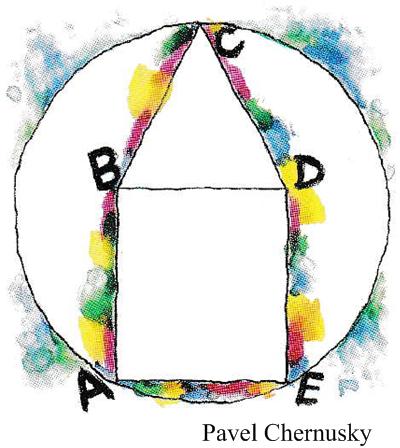 Here is another problem from the “Brainteasers” section of the Quantum magazine.
Here is another problem from the “Brainteasers” section of the Quantum magazine.
“Side AE of pentagon ABCDE equals its diagonal BD. All the other sides of this pentagon are equal to 1. What is the radius of the circle passing through points A, C, and E?”
See the Circumscribed House Problem for solutions.
